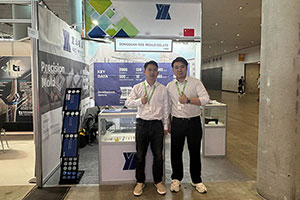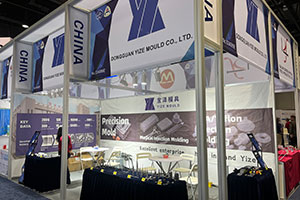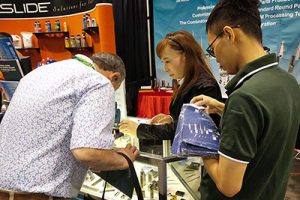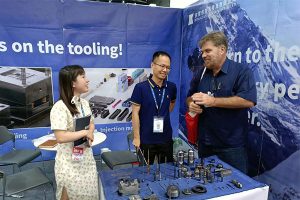The Impact of Cutting Force on the Service Life of Tungsten Carbide Dies
In the field of metal processing, tungsten carbide dies are widely used due to their high hardness, excellent wear resistance, and high thermal resistance. However, during the machining process, dies […]
In the field of metal processing, tungsten carbide dies are widely used due to their high hardness, excellent wear resistance, and high thermal resistance. However, during the machining process, dies are inevitably subjected to the influence of cutting forces. These cutting forces not only determine the machining efficiency and product quality but also have a significant impact on the service life of the dies. This article will conduct an in – depth exploration from the sources, characteristics of cutting forces, and their impact mechanisms on tungsten carbide dies, aiming to provide references for die design and use.
I. Sources and Characteristics of Cutting Forces
Cutting forces are generated from the interaction between the cutting tool and the workpiece during metal processing, mainly including the main cutting force, feed force, and back force. The main cutting force is perpendicular to the cutting speed direction and is the main contributor to the energy consumption and cutting heat in the cutting process. The feed force acts along the feed direction and affects the feed motion of the workpiece and the deformation of the cutting layer. The back force acts along the cutting speed direction and mainly affects the machining accuracy and surface quality of the workpiece.
Unser Fabrikgeschäft: Hartmetallteile, Formteile, medizinische Spritzgussformen, Präzisionsspritzgussformen, Teflon-PFA-Spritzguss, PFA-Rohrverschraubungen. E-Mail: [email protected],whatsapp:+8613302615729.
The magnitude of cutting forces is related to various factors, such as the workpiece material, tool material, and cutting parameters (cutting speed, feed rate, cutting depth). Among them, the hardness and toughness of the workpiece material are the main factors affecting the cutting forces. Materials with higher hardness and better toughness generally result in larger cutting forces. In addition, the hardness and wear resistance of the tool material also affect the magnitude of the cutting forces.
II. Impact Mechanisms of Cutting Forces on the Service Life of Tungsten Carbide Dies
(A) Wear on the Die Surface
During the machining process, cutting forces cause wear on the surface of tungsten carbide dies. When the cutting forces are large, the friction between the die surface and the workpiece intensifies, leading to an increase in the die surface temperature and accelerating the wear of the die surface. Moreover, cutting forces can cause micro – cracks and plastic deformation on the die surface, further reducing the surface quality and service life of the die.
(B) Damage to the Die Structure
In addition to affecting the die surface, cutting forces can also cause damage to the die structure. During the machining process, cutting forces induce vibrations and impacts on the die, resulting in stress concentration and fatigue damage inside the die. When the stress concentration exceeds the strength limit of the die material, the die may fracture or break.
(C) Impact on the Thermal Stability of the Die
Cutting forces generate a large amount of cutting heat during the machining process, which is transferred to the die and raises its temperature. In a high – temperature environment, the hardness and strength of the die material decrease, leading to a reduction in the wear resistance and fatigue resistance of the die. Furthermore, high temperatures can accelerate the oxidation and corrosion processes of the die material, further shortening the service life of the die.
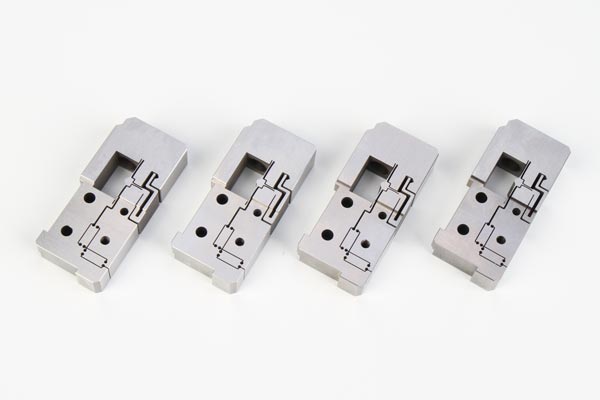
III. Methods to Reduce the Impact of Cutting Forces on the Service Life of Tungsten Carbide Dies
(A) Select Appropriate Tool Materials and Tool Structures
To reduce the impact of cutting forces on the service life of tungsten carbide dies, appropriate tool materials and tool structures with excellent cutting performance and wear resistance can be selected. For example, using tungsten carbide tool materials with high hardness and wear resistance, along with reasonable tool geometries and cutting parameters, can effectively reduce the magnitude of the cutting forces.
(B) Optimize Cutting Parameters
Cutting parameters are one of the key factors affecting the magnitude of cutting forces. By optimizing cutting parameters such as cutting speed, feed rate, and cutting depth, the magnitude of cutting forces can be reduced, and the machining quality can be improved. In actual production, appropriate cutting parameters should be selected according to the workpiece material and machining requirements.
(C) Strengthen Die Cooling and Lubrication
Strengthening die cooling and lubrication is an effective measure to reduce the impact of cutting forces on the service life of tungsten carbide dies. By reasonably setting up the coolant supply system and using high – quality lubricating oils, the die surface temperature can be effectively reduced, and wear can be minimized. At the same time, coolants and lubricating oils can also play a lubricating role, reducing friction resistance and cutting forces.
(D) Regularly Inspect and Maintain the Dies
Regularly inspecting and maintaining the dies is an important measure to extend their service life. By checking the wear condition of the die surface and the structural integrity, potential problems can be detected and dealt with in a timely manner. Meanwhile, regular maintenance and upkeep of the dies, such as cleaning, grinding, and coating, can restore their performance and extend their service life.
IV. Schlussfolgerung
Cutting forces are one of the important factors affecting the service life of tungsten carbide dies. In actual production, it is essential to have a thorough understanding of the sources and characteristics of cutting forces and take effective measures to reduce their impact on the die service life. By selecting appropriate tool materials and tool structures, optimizing cutting parameters, strengthening die cooling and lubrication, and regularly inspecting and maintaining the dies, the service life of tungsten carbide dies can be effectively extended, and production efficiency can be improved.


